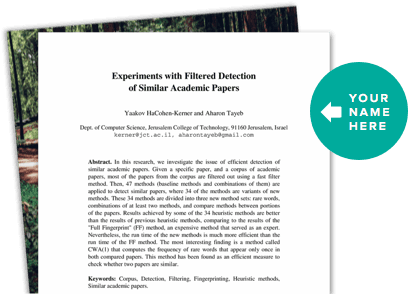About This Project
The goal of this research is to develop a zero-energy, zero carbon emitting, functional cooling garment prototype — designed for extreme heat events. We explore the function of clothing in relation to its wearer and the environment pulling inspiration from the Coolant adiabatic cooling towers. Leveraging 3D clothing patterns, and self cooling fabric, we focus on cooling regions of the body that are known to perspire most.
Ask the Scientists
Join The DiscussionWhat is the context of this research?
Ideated at CERN, AEMULA is inspired by the zero-energy air-conditioning architectural structures developed by Ant studio. With their collaboration, we have begun designing a cooling garment based on the principle of phase change (evaporation); absorption of ambient heat generates a cooling effect when air runs through it. Recently, microencapsulated Phase Change Material (PCM) fabrics have become available on the market, allowing us to scale the principle of the cooling towers down to a self-cooling garment. PCM is a substance that releases, or absorbs, energy sustainably at phase transition to provide useful heat or cooling. Leveraging the kirigami effect, we've begun conducting research and development on a wearable garment with optimal air-flow.
What is the significance of this project?
Wet-bulb temperature is an extreme heat event that happens when the temperature exceeds 35°C with a humidity level of 100%. Those events induce overheating in humans, marking our survivability limit to climate change. While these events are still sparse, they are predicted to increase in frequency in the Middle East and south Asia.
In addition to those events, these regions are already subject to extreme heat with temperatures regularly exceeding 45°C in India. While traditional clothing has adapted to withstand heat encountered in these regions, innovation must take shape to allow for people to continue carrying out their work and daily lives in increased temperatures.
What are the goals of the project?
The goal is to develop a zero-energy, zero carbon emitting, cooling garment prototype to gain confidence that it can effectively cool down the body. We’re using an iterative approach exploring the best scale and placement for the laser cut openings in relation to the body’s perspiration zones ensuring optimal air flow. We will quantify how well this garment cools the user with thermal imaging and a virtual simulation through, CFD analysis, to assess its cooling potential.
The future vision is to employ Embodied Design Ideation — “working with relationships between body, material and context to enliven design and research potential” — to incorporate shape memory alloy that responds to external and body temperature to automatically ventilate the body with precision.
Budget
In order to carry this project, we will need to source Phase Change Material embedded fabric to perform tests. As the technology is relatively new, the material is not easily available and can only be found on B2B platforms online. For small quantities samples, the price is 50$ / m. Testing will be carried out in Brussels FabLab on a fabric laser cutter, for which we will get an subscription. Finally, to quantify the cooling effect, air flow simulations will be outsourced to specialized companies and thermic profiles will be obtained using thermal imaging. The 3 designers are located in different countries (and even continents) so part of the budget is dedicated to shipping the prototype to the various locations and to eventual exhibitions. Finally, a compensation for the individual work of the team members is also taken into account.
Endorsed by
 Project Timeline
Project Timeline
We will start by sourcing the materials and carrying laser cutting tests on the PCM fabric to see how the slits would have to be designed to ensure maximal airflow without being too revealing of the skin nor making the fabric prone to ripping.
Then, we would quantify the cooling effect and compare it with other fabrics.
Finally, we want to make a prototype and conduct a cost analysis to see this garment could be a suitable solution to overheating problems during extreme heat events.
May 07, 2024
Project Launched
Jun 01, 2024
Project starts
Jul 30, 2024
Selection of the best pattern for air flow in the final design and obtention of thermal images.
Sep 15, 2024
Finalization of the prototype and quantification of the cooling effect.
Oct 09, 2024
Presentation of the garment at a design fair (Dutch Design Week 2024)
Meet the Team
Team Bio
Mariaclara, Vidisha and Annah are an international group of designers who met during their masters in Future Technilogies for Sustainable Fashion in Barcelona. During the ATTRACT project in partnership with CERN, they came out with the idea of the AEMULA cooling garment. Though they have shared knowledge of sustainable fashion design, they all have a different background helping them approach problem solving through specific angles (bioengineering, fashion design and UX design).
Annah-Ololade Sangosanya
Annah-Ololade is a Bioengineer and a Textile designer by training (M. Eng in biology, INSA Toulouse and Fabricademy textile and technology academy postgraduate, IAAC Barcelona). Her fields of expertise are microbiology, fermentation processes, genetic engineering but also digital fabrication, 3D design and rapid prototyping. She is a curious mind always willing to explore how science and design can be used in synergy to develop sustainable solutions to our current problems.
Her current focus is on microbiology, biomaterials and biodesign as she recently onboarded two ambitious projects: a PhD on textile waste biodegradation using mycelium at the Vrije Universiteit Brussels while simultaneously working on the EU funded WORTH partnership project, in which she is developing fashion accessories grown from flexible mycelium materials.
Vidisha Goel
Vidisha is an emerging fashion designer, who passionately integrates sustainability into her design process. She is currently the lead designer at a homegrown brand named Mistry India, where she explores various techniques to create unique, purposeful garments, inspiring others to embrace responsible fashion for a more sustainable future.
Mariaclara
Mariaclara Golfo is a seasoned Product Designer and Researcher with 12 years of experience, holding a B.A. in fashion and a Master's in Sustainable Fashion Technology. She’s worked on B2B, B2C and SaaS products including design and research for Spotify, Samsung, the Department of Defense, Dell, Brit + Co and more. She’s passionate about sustainability and leveraging design thinking and complex problem solving to innovate toward climate solutions in the fashion space.
Lab Notes
Nothing posted yet.
Additional Information
Full presentation of the project available here.
Project Backers
- 1Backers
- 1%Funded
- $5Total Donations
- $5.00Average Donation




